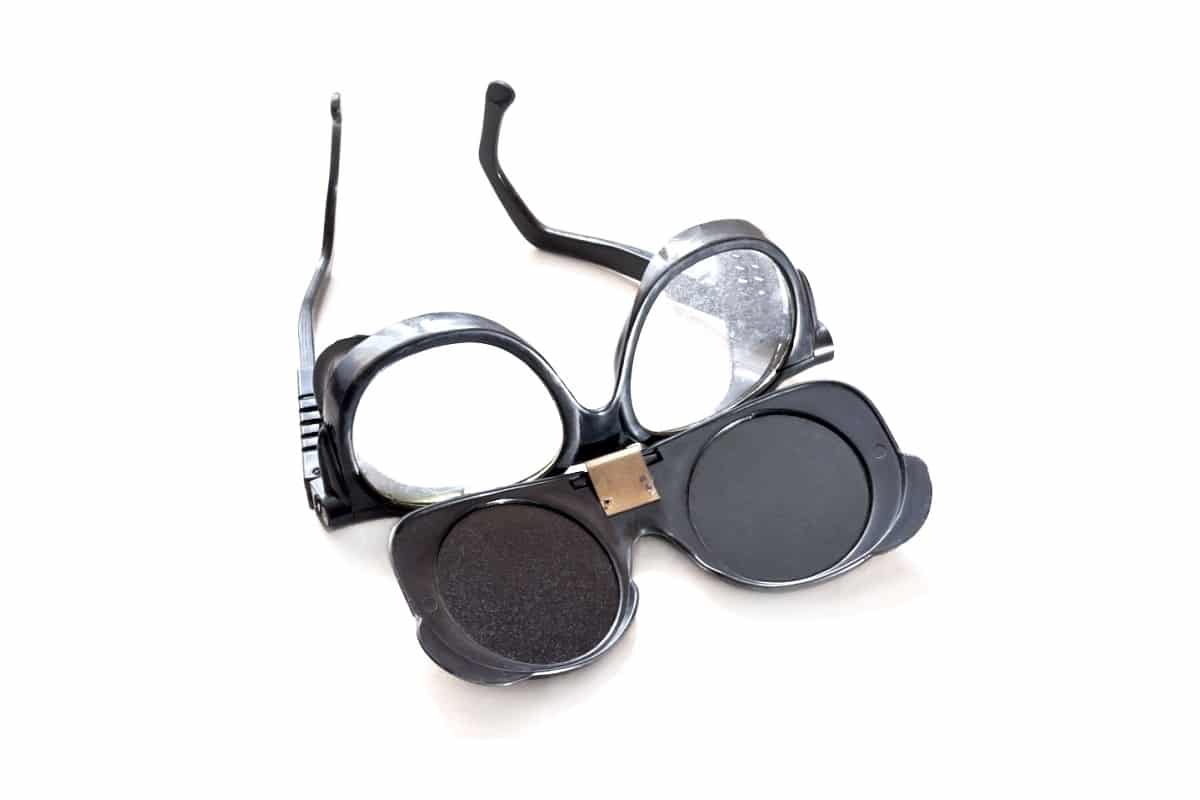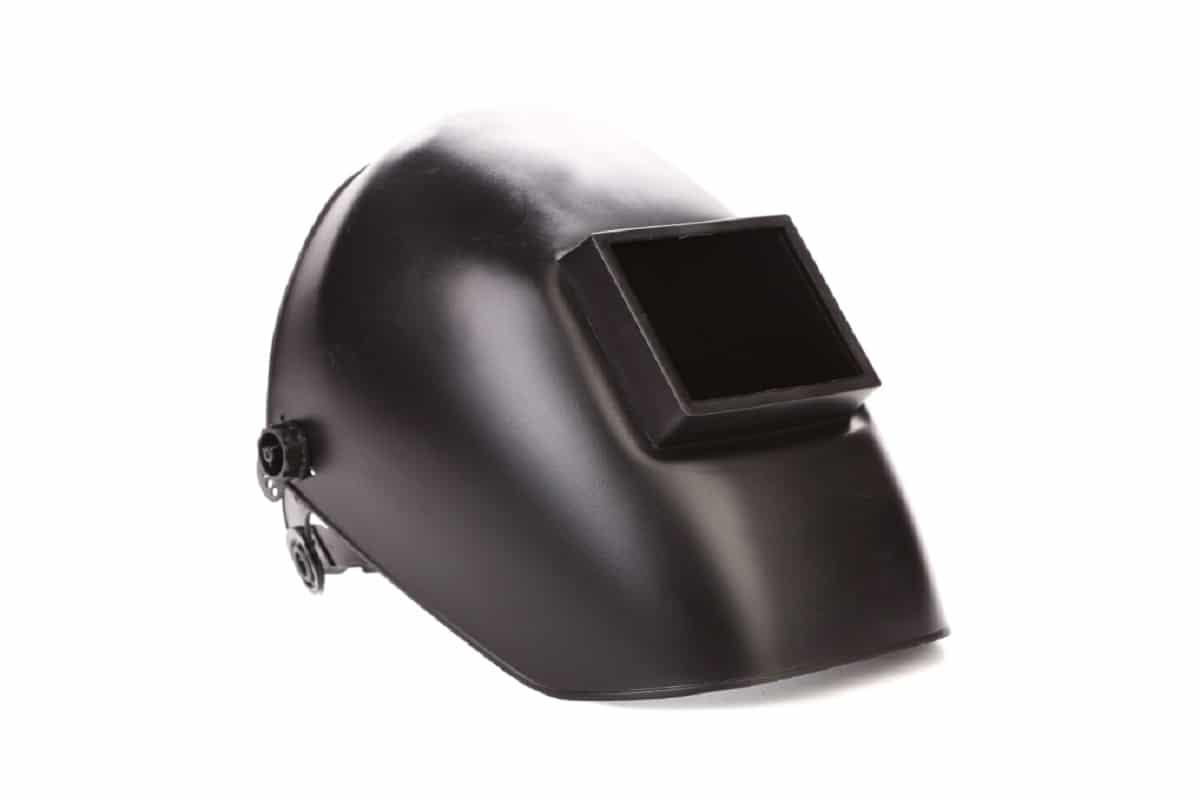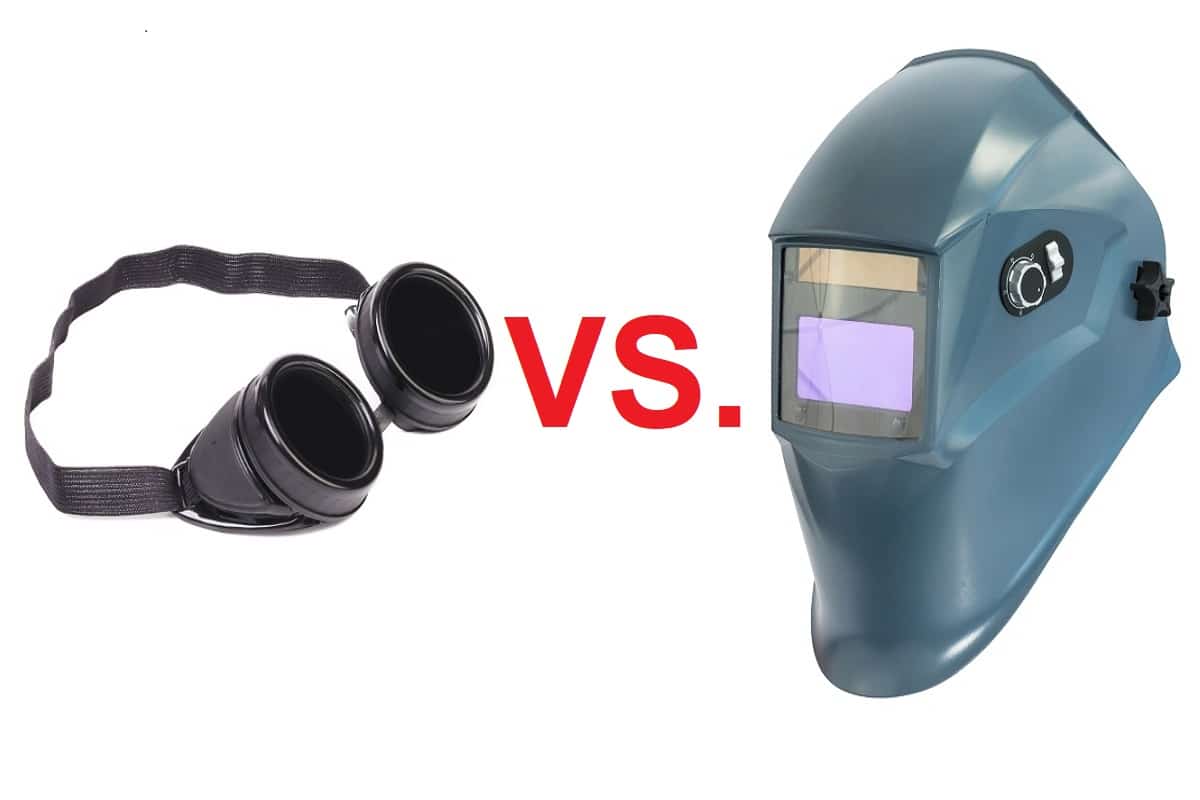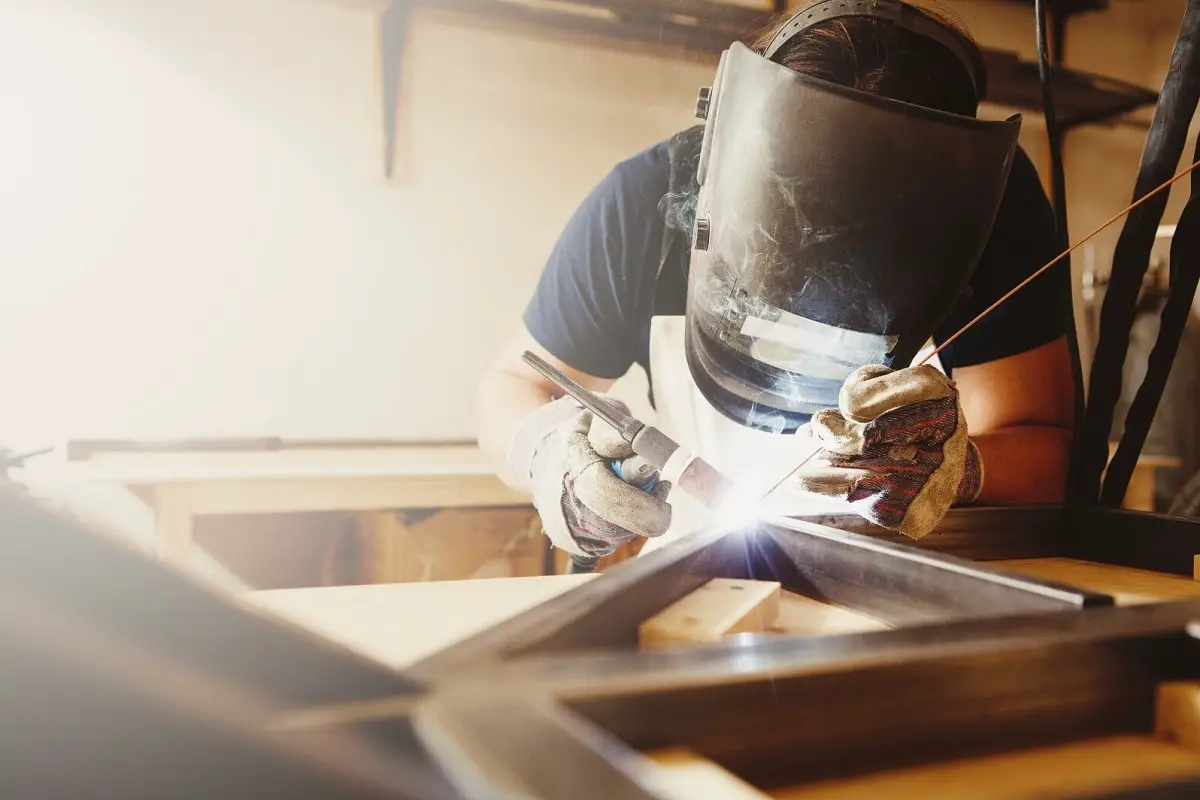When you consider all of the hazards that are present when you are welding, you can see why it is important to use welding safety gear. If you are welding without using either safety glasses or helmets, you could easily lose your sight or have permanent eye damage. But which is best to wear? Find out below.
When To Wear Welding Safety Glasses
It is recommended to only wear welding safety glasses for cutting, grinding, or brazing. OSHA has set standards, hazards, and solutions for these activities. Welding glasses can protect from minimal sparks or bursts of light or particles. Welding safety glasses may also be ANSI rated for impact risks.
Welding safety glasses that resemble goggles may provide protection for certain types of arc welding. This depends on the characteristics of the glasses/goggles.
Welding safety glasses have a dark tint that can make them difficult to see through. This is designed for stopping the level of brightness of light that the wearer can face. So, it is not recommended to wear them as general-purpose safety glasses, unless they have a lens flip-up mechanism with a clear lens underneath to allow for better visibility.

When To Wear a Welding Helmet
Welding safety helmets are useful for any type of welding activity including arc welding and protect the full face area from any light bursts, sparks, or heat. Welders should only use high-quality welding helmets to minimize the risk of serious or fatal injuries that may occur during your work. These are the go-to protection for professional welders. They should be capable of protecting the wearer from most types of risk from affecting the face, neck, forehead, or eyes. Dangers they protect against include:
- Dust particles
- Splinters and shards
- Excessive heat
- UV and infrared light
- Localized gases
- Small bursts

Welding safety helmets can be used for the following types of welding:
- Lazer arc welding
- MIG welding
- Stick welding
- TIG welding
- Electroslag welding
- Automic hydrogen welding
- Plasma Arc welding
- Electron beam welding
- Laser beam welding
- Gas welding
- Flux cord arc welding
Similarities
Both welding safety glasses and welding safety helmets have lenses that are designed to protect the wearer’s eyes from the brightness and heat resulting from cutting, brazing, or welding. They are both made of similar materials, ? with similar properties?
- Nylon
- Polycarbonate
- Plastic
- Rubber
Both are designed to protect from Infrared Light (IR 2, IR 3, etc.) and both may meet ANSI/ISEA Z87.1+ impact standards. Make sure to check the advertisements of each to make sure of their ratings.
Welding safety glasses do not have a face shield, but often include straps to help keep them on the wearer’s head.
Both can be purchased online or at local hardware stores, fit both genders, and come in different colors.
Differences
There are some significant differences between welding safety glasses and welding safety helmets. Welding safety helmets are generally more protective of the wearer during all welding, grinding, or cutting activities.
Welding safety helmets include the following features:
- A full helmet, hood, or wrap-around facemask
- Adjustable headgear with a dial to fit many different sized heads.
- Lenses with an overall wider field of vision.
A welding safety helmet has a full wrap-around protector shield, or facemask, that protects the full face and front of the head from dangers.
Welding safety helmets will have a darker shade lens tint than glasses for increased infrared light protection. Welding helmet shade ranges are usually between shades #8 to #13.
Welding safety glasses are limited to protecting just the eye and temple area. Glasses or goggles also protect from lower infrared light levels.
Welding safety helmets can also include the following capabilities:
- Choose from grind and weld modes.
- Auto-dimming sensors.
- Auto-darkening lens.
- Adjust the distance from eye to lens adjustments.
- Crown strap adjustment to raise or lower the helmet.
- Large dial that allows size adjustment without removing the helmet.
- Fits over certain hardhats.
- Meets European Norm (EN) optical clarity standards (EN379) rating.
- Locking safety lever for easy grip of the face shield.
- Dual voltage AC/DC adapter for battery charging and auto-darkening.
See ANSI Z49.1 for more information about welding safety guidelines.
Which Is Better?

Welding Helmets Provide Better Overall Protection
Welding safety helmets cover more of the face and neck area and are designed to protect the wearer during arc welding. Welding safety glasses are more convenient but are not able to protect the wearer during all types of welding activities. (see below)
Welding safety helmets can better protect from excessive dust, particles, or gases that emanate around the welding area. However, neither helmets or glasses can fully protect the wearer from breathing these in.
Welding Helmets Are Bulkier
A welding safety helmet will provide more protection for the welder than welding safety glasses. However, it can be heavier and bulkier when compared to welding safety glasses which are lighter. Welding safety helmets can lead the wearer to bump into objects they cannot see around them.
However, removing the helmet, or lifting up the visor does not require touching the lens. So, the welder does not need to take off their welding gloves to do this. Lifting off welding safety glasses can lead the wearer to accidentally touch the lens, making it dirty or scratching it.
Welding Helmets Are Required for Arc Welding

Welding helmets are designed to protect the welder from arc welding glare, sparks and weld spatter. Welding safety glasses do not provide enough protection for arc welding. Welding safety glasses are only designed to provide protection during cutting, grinding, or brazing. Only lenses that are IR 8.0+ (infrared light) can protect from light emanated during arc welding. Infrared light can cause significant eye damage over time. Make sure to check the product advertisement or packaging for the IR protection level.
Welding Helmets Are More Expensive
Welding safety glasses prices range anywhere from $20-$50 for a pair. Welding safety helmet prices can range from $30-$300+ for one. Welding safety helmets may include more or fewer features, such as auto-dimming, which can affect their price. So, if you are on a budget and are not arc welding, then welding safety glasses may be best.
